NorthEast Radio Watch 12/15/2025: NYC Morning Shakeup
In this week’s issue… NYC morning shows exit - Carton back amidst WFAN shakeup - FM signing off in Canada - More radio centennials
Text and photos by SCOTT FYBUSH
How often do we get to see two phenomenally impressive studio facilities on two consecutive days? It’s rare, but it happened last March as we headed north from Florida back to Rochester by way of an extended stopover in Washington and Baltimore.
In last week’s installment, we showed you the amazing Hubbard facility for WTOP and Federal News Network in Washington, a testament to what you can do when you’re building from scratch with the kind of budget you can muster when your station has more revenue than any other radio station in the country.
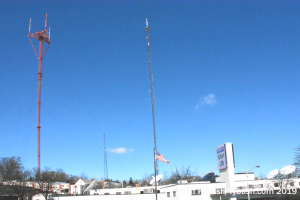
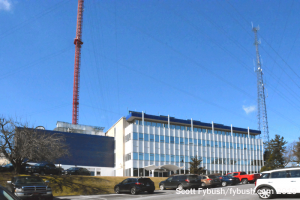
But what do you do when you don’t have the luxury of a completely blank slate, and instead have to work within the confines of a building that’s almost sixty years old, built for a very different model of broadcasting?
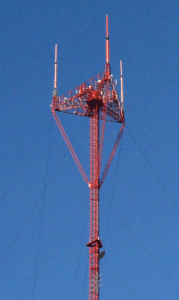
That’s what Drew Pinkney and the engineering team faced at WBAL (1090) and WIYY (97.9) just an hour up the road in Baltimore. These are the only radio stations owned by Hearst, sharing the building on TV Hill with WBAL-TV (Channel 11), and this was hardly our first visit to the hill. Back in 2008, we’d seen the earlier version of these studios (which we featured in this Site of the Week piece in 2010); since then, we’d at least stopped to gaze up at the towers here every time our travels down I-83 brought us this way.
The candelabra tower here is one of the most impressive in the country, shared by the city’s three original TV stations. CBS-owned WJZ-TV (Channel 13) also has its studios here on the hill, on the other side of the tower from WBAL’s building; Scripps’ ABC affiliate, WMAR (Channel 2), has studios way across town but has also transmitted from this nearly 1000-foot tower since it was built in 1957. (It was shorter then – they added almost 300 feet to it in the 1960s!)
There’s a guyed tower on the hill that’s even taller; it belongs to Sinclair’s flagship stations, Fox affiliate WBFF (Channel 45) and CW affiliate WNUV (Channel 54), who have their studios nearby at the base of the hill, just around the corner from the road that winds its way up to WBAL’s building.
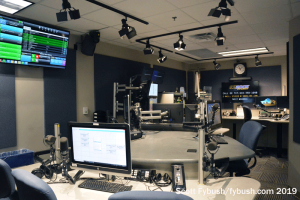

Heading up to the third floor, at first things don’t look all that different from our visit back in 2008 – there’s the same long hallway past the programming and sales offices that wraps around to the studio core. But then we enter the studios of Hearst’s FM station, “98 Rock” WIYY, and the change is immediately obvious.
This is one big room now, serving as both control room and as a large air studio for the “Justin, Scott and Spiegel” morning show and the rest of WIYY’s programming, including its Baltimore Ravens broadcasts. There are video screens everywhere, showing outside cameras, the automation screens, video feeds from WBAL-TV and more – and at the heart of it all (just as at WTOP and Hubbard) is a Wheatstone control surface. The furniture is modular, making it easy to move seats around depending on whether it’s the rock morning show, the Ravens pregame or whatever else 98 Rock needs to do in here.
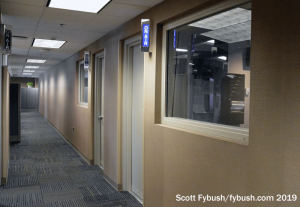
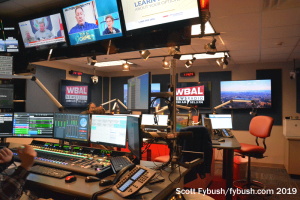
Moving down the hall, the change from our 2008 visit is even more obvious in WBAL’s studios. The news-talk station had a pretty typical set of studios when we were last here, with a control room separated by an airlock from a relatively small on-air talk studio.
Those walls all came down in an extensive renovation, as Drew explained in this video we shot for our partners at Wheatstone:
Opening up these two studios into a single space created an unusual facility where a lot of things are all happening at once: there’s no wall separating live talk from the producer who’s answering phone calls and getting remote guests on the air. Noisy? Not really – good mic processing and acoustic design keeps the hosts and guests front and center on the air.
There are 42 monitors in this room, 15 of them just for the producer alone, and every sightline was carefully considered. The producer can see right across to the host and guests, the host’s view includes screens for the Wide Orbit automation, phone screening, live TV news and whatever WBAL-TV is feeding from downstairs. The guests don’t need all that distraction, so they mostly just see the station logos and those nice views from the tower cam outside.
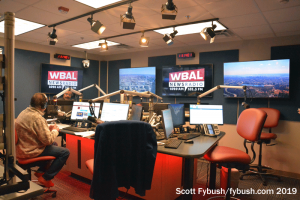
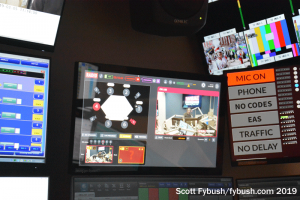
This studio was designed with “visual radio” in mind, so the camera angles were also carefully considered during design and construction. They’re mostly auto-switched for WBAL’s video streaming feed, using closures from the WheatNet-IP system to tell the MultiCam system which mic is on the air and feeding audio at any given moment.
And there are all sorts of clever tiny little design features here, too: the LED lighting under the table, the soft rubber hooks that Drew found for headphones (no more banging of guests’ knees on the usual hard headphone hooks under the table!), the chair rail that keeps guests from banging into the walls and hitting the monitors. It’s all a very, very impressive facility.
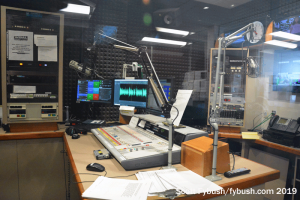
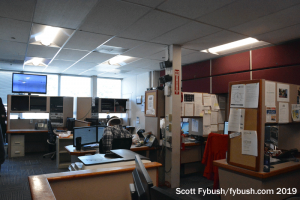
Across the hall, WBAL’s radio newsroom hasn’t changed as much – it’s still in the same spot, with the same studio for the news anchors to work from (linked, of course, by video feeds to the main studio on the other side of the hallway.)
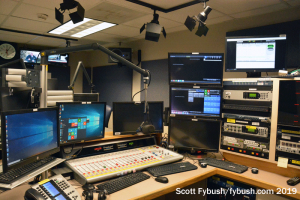
There’s another cluster of studio space deeper inside the building, used mainly for production. During the reconstruction of the studios for 98 Rock and WBAL, though, these rooms took on temporary duty as the interim air studios while the main rooms were being gutted and rebuilt, one at a time. (98 Rock went first, then WBAL, in a process that took well over a year.)
The radio technical core is up here behind the studios, too, now with a big rack of Wheatstone blades to power the whole Wheatnet-IP system, along with all the usual satellite receivers, STL gear and everything else you’d expect to find.
(Remember that video from a while back of the 98 Rock board frying, live on the air, after a jock accidentally spilled an entire mug of coffee into it during the morning show? The scorched remains of the board’s innards still hang on the wall in the engineering shop back here – but of course with networked audio, it would be much simpler now to move everything to the backup studio in seconds, should anything like that happen again.)
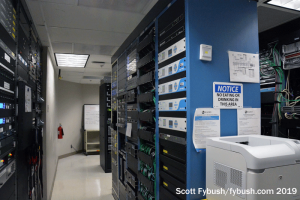
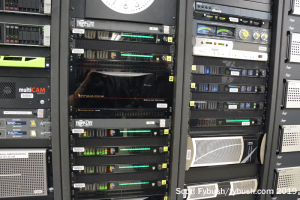
When we last visited in 2008, the WBAL-TV studios downstairs were undergoing their own renovation, so all we saw then was a big empty TV studio while newscasts were coming from the newsroom next door.
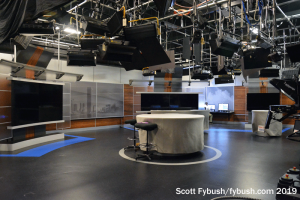
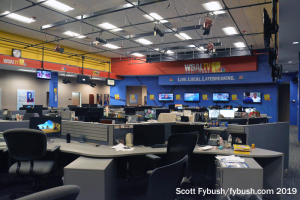
That studio work is long since finished, so we finally got a peek inside the TV studio at the south end of the building, which adjoins the big newsroom (in what I think was originally a TV studio itself when this facility was built.)
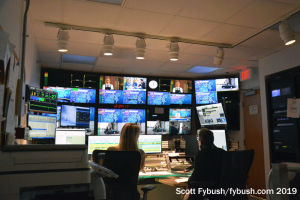
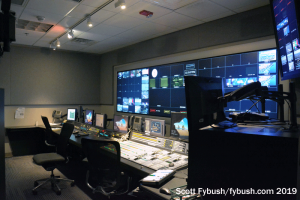
Master control for WBAL-TV is still local here, down the hall at one end; down another hall from the newsroom is the control room for the local newscasts.
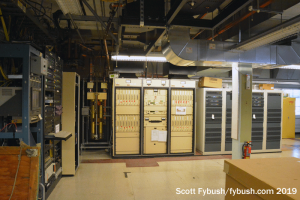
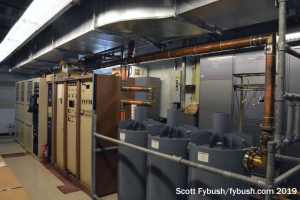
There’s no STL path for the TV station or for WIYY, of course – it’s straight from master control to the transmitter room at the back of the building.
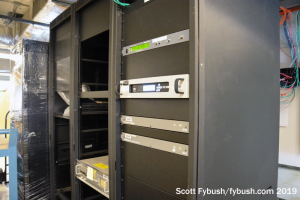
This was the original WBAL structure up here, since the TV station began transmitting here before the studios moved up from their original home downtown. It’s changed a lot since 2008, of course – back then, WBAL-TV’s analog channel 11 facility was still on the air here, along with an interim DTV transmitter on RF 59. WBAL flash-cut to digital on VHF channel 11, using the Larcan that’s still here alongside its newer replacement, a GatesAir Maxiva. Soon, WBAL will be moving again, transitioning to RF 12 in the upcoming repack, which will mean helicopter lifts up here on TV Hill.
WIYY is back here, too, with its Continental and Harris rigs. So is a newer addition, the little Nautel that powers WBAL’s FM translator, W286BA (101.5), which uses the height of TV Hill to get impressive coverage of Baltimore even with minimal power.
What about WBAL’s big AM signal? We went there, too, and you’ll see that impressive facility in our next installment.
Thanks to WBAL’s Drew Pinkney for the tours!
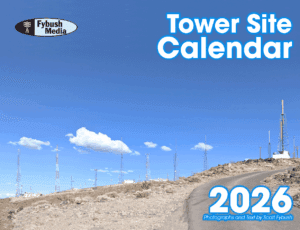
As we announced a few weeks ago, the 2026 edition of the Tower Site Calendar will be the last.
We began publishing it 25 years ago, and the broadcast landscape is radically different now.
Radio World just ran an excellent article about us if you want to know more.
Once it’s gone, that’s it. We won’t be printing any more.
Thank you to everyone who saw our announcement and rushed to buy it. We appreciate you.
(There are some calendars from previous years if you want more of a tower photo fix — all under $5.)
But don’t wait to get this year’s Tower Site Calendar — buy it now!
We are selling the Broadcast Historian’s Calendar again this year, but we have that in an even smaller quantity — definitely don’t hesitate for that.
And visit the Fybush Media Store to check out our selection of books and videos, too!
And don’t miss a big batch of Baltimore IDs next Wednesday, over at our sister site, TopHour.com!
Next week: WBAL transmitter site
In this week’s issue… NYC morning shows exit - Carton back amidst WFAN shakeup - FM signing off in Canada - More radio centennials
In this week’s issue… Veteran newsman returns - Remembering NY's Leitner, RI's Jones - CT AM saved - Maine AM moves - "Indie" adds suburban signals
In this week’s issue… Scripps stations face takeover - Sinclair moves more affiliations - CT stations sold - Maine AM surrendered - Remembering WVBR's Shapiro, WABC's Morgan
In this week’s issue… CT TV legend succumbs to cancer - Remembering PA's Adams - FCC still stalled by shutdown - Pittsburgh morning host exits